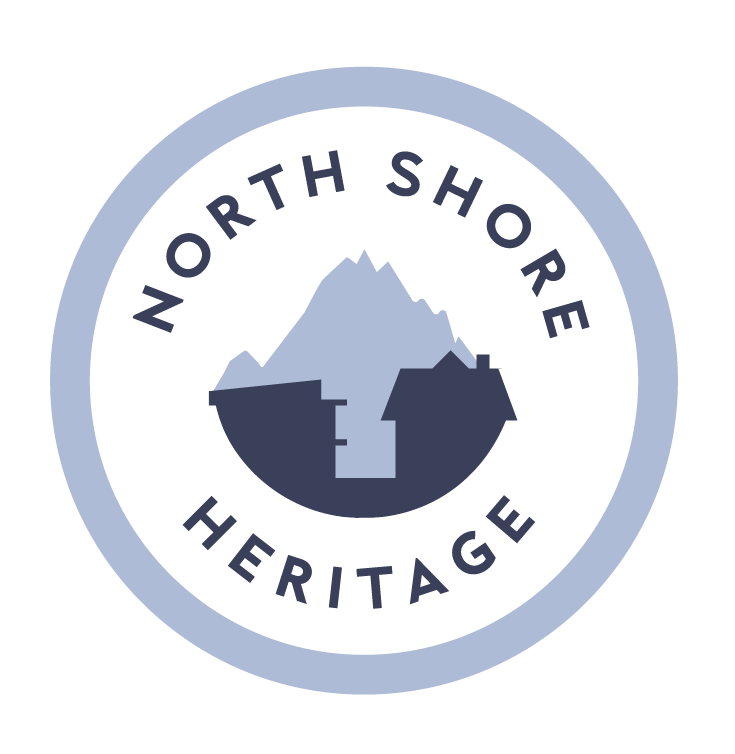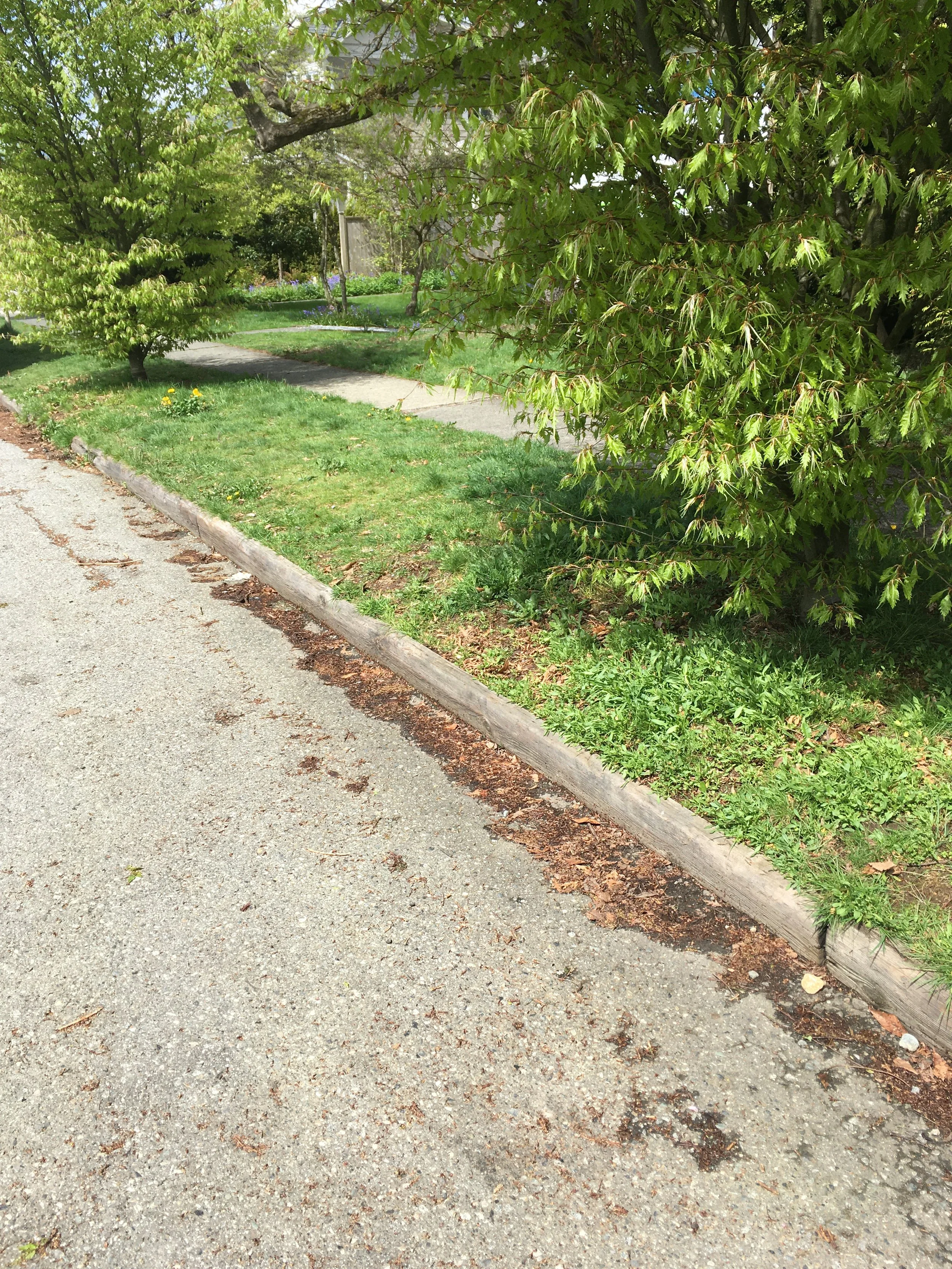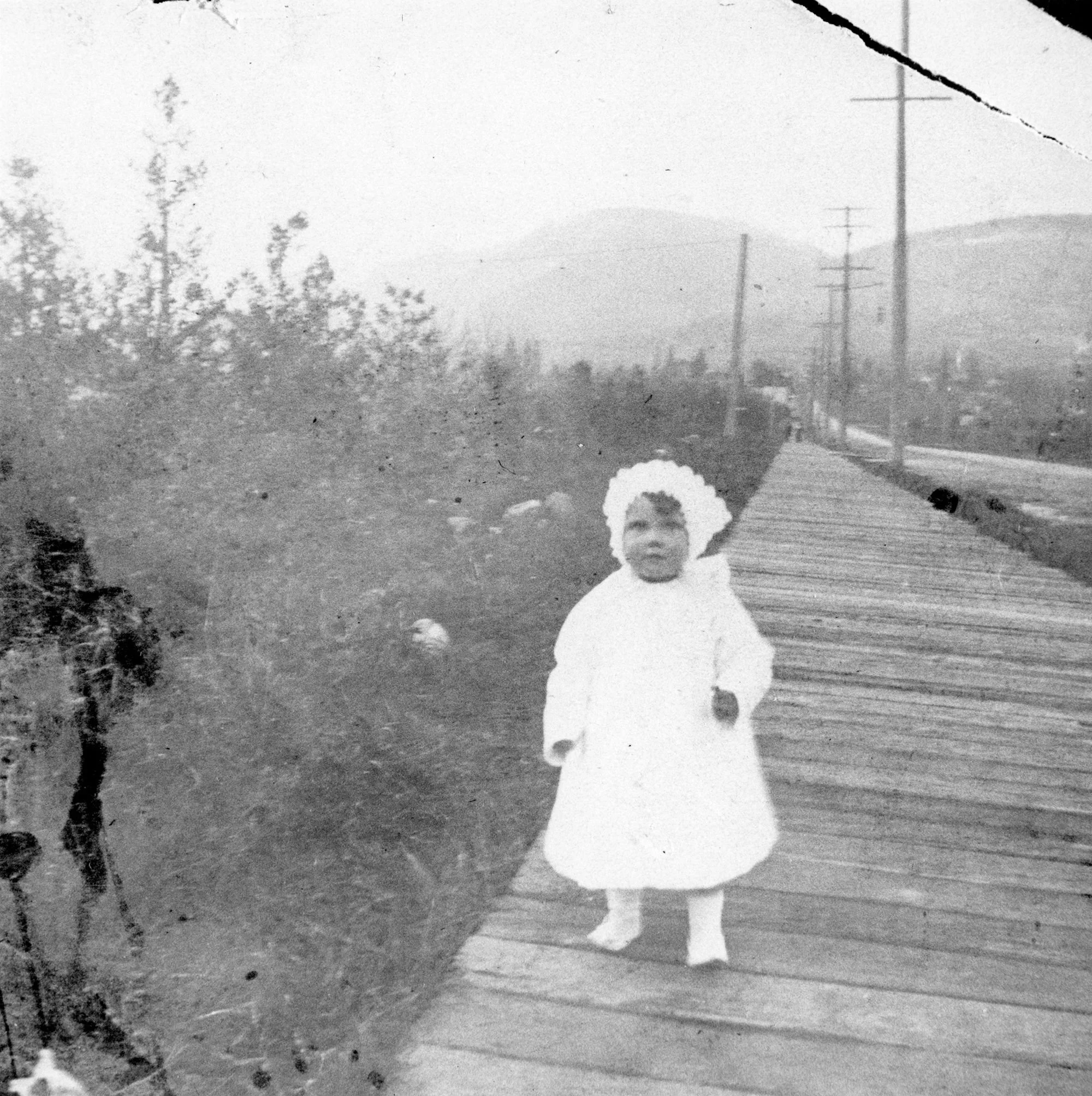Perhaps you have just returned home or perhaps you are about to head out. Either way, chances are that you will be stepping along a sidewalk at some point and you won’t give it any thought except perhaps to occasionally wonder why some North Shore streets have sidewalks while others don’t.
A contributing factor to the City of North Vancouver’s small but impressive network of sidewalks is that it has, for the most part, a topography within its 12 square kilometres that leant itself to the establishment of a compact grid layout of streets and rear lanes.
But for the most important contributing factor, you have to go back to 1925 and 1926 to discover that the council of the time considered sidewalks to be a significant infrastructure priority, so not only did they talk the talk, but they also walked the walk by adopting the “The City of North Vancouver Sidewalks Construction Loan Bylaw 1926” and then devoted a significant amount of the budget to the project.
Prior to the Great Depression, the economy was booming and the cement sidewalks became a badge of honour for the city. A newly cemented sidewalk would carry the contractor’s seal, the street name, and date of installation. A “D” in the cement identified the location of buried drains. To reduce the danger of a pedestrian slipping, an indentation roller for cement was employed on the surface.
Earlier cement sidewalks had wooden curbs and you can still see examples of these on West 14th Street.
Wooden curb in the 300 block of West 14th Street in North Vancouver. Photo by Jennifer Clay.
You can also still find date markings embedded into the cement. Examples include at the SW corner of East 15th and Ridgeway, the SE corner of East 9th & Grand Boulevard and the SW corner of East 9th and St Andrews. You may be able to find more the next time you are out for a walk, but they are disappearing with upgrade replacements.
1930 sidewalk @ SE East 9th @ Grand Blvd. Courtesy David Perfitt.
Before the use of cement, the City of North Vancouver’s early sidewalks were wooden and prone to rotting in the wet climate. At the beginning of the 20th century, these wooden sidewalks were used in populated areas of the North Shore.
A young walker in 1917 on wooden sidewalk Lonsdale & 19th Source: MONOVA Archives of North Vancouver’ Inventory 5486
1928 Chinese fish merchant at 267 W Queens, standing on wooden sidewalk. Source: MONOVA Archives of North Vancouver’ Inventory 6367
Cars were a luxury and to get around most people either walked, rode a bike or took a streetcar.
Streetcars & CNV Municipal Hall 1908, NE 1st & Lonsdale, Source: MONOVA Archives of North Vancouver’ Inventory 3224
The original horsepower, that is horses, was very much in use and performed many tasks. Back in 1913 two horses named Tom and Jerry pulled the fire wagon to and from the East 13th Firehall where a firehall still stands today. At that time, horses were in use to pull, for example, the undertaker’s buggy, the laundry wagon, the milk wagon and the garbage wagon - the latter horse and garbage wagon team also covered the night shift at the firehall.
In 1922, Lower Lonsdale, like today, was a hub of activity. It was home to the ferry terminus, a variety of businesses, the City Hall and hotels such as the Hotel North Vancouver. It was also home to the Wallace Shipyards that later became the Burrard Dry Dock.
Hotel North Vancouver, wooden sidewalks on Esplanade, between 1905-15, where IGA is today. Source: MONOVA Archives of North Vancouver’ Inventory 15797
1924, CIBC and Paine Hardware at S East 1st & Lonsdale at opposite corner from the 1908 photo of the Municipal Hall. Note the stone used in the construction and the cement sidewalks. The corner looks the same today. Source: MONOVA Archives of North Vancouver’ . Inventory 6907
As Lower Lonsdale densified, the affluent among the community sought what they considered to be more salubrious areas to live in, areas that were removed from the hustle and bustle to offer a semi rural tranquility. So, they moved away from the centre of commerce to build grander houses on larger lots. To obtain the sense of being rural, sidewalks were often dispensed with. It also cut down on the cost of development. Lanes became less common in the new developments, with front driveways replacing them. Some examples of these original larger houses can be seen today in Tempe Heights and in parts of Upper Lonsdale in the District of North Vancouver. And there are still no sidewalks. In the case of Upper Lonsdale, much of the topography did not lend itself to lanes and, besides, lanes used up land.
As developments fanned out on the North Shore, residents became distanced from the street car, and later from bus routes, and the car filled the void. It was Alderman Vance, also a former CNV mayor, who moved the motion to adopt the Sidewalks Bylaw in 1926. His 1910 house, at 620 West 15th Street, is a perfect example of a home built in a semi-rural area, as it would have been at that time. Ironically, it remains one of the few streets within the City of North Vancouver that lacks sidewalks. And we know that he could afford to own a car because the Council Minutes, in 1918, when he was mayor, show that he suffered a broken arm hand-cranking his vehicle and it was noted that cheque signing had to be assigned to another council member!
Mayor Vance House,600 block West 15th built 1910. Courtesy, Colin Lawrence
In the post WWII era, driving, rather than walking, became the favoured way to get around and as the production and sale of cars increased, the prices decreased. People were enthralled by large cars such as Fords, Chryslers and Pontiacs, with their showy tail fins and chrome. The car allowed people to leave urban for suburban and to settle into new subdivisions where walking to the “high street” was replaced by driving to the mall. There were no sidewalks in these areas, and to this day, if you run out of milk, you have to drive some distance to a store as zoning did away with the corner store.
In the late 1950’s, North Park Royal Shopping Centre was the first covered shopping mall in Canada, with its own covered parkade. It was designed for vehicles and shoppers loved the idea, especially the avoidance of rain from car to shop. The mall sits at the base of Taylor Way, the road that climbs to the British Properties, where meandering streets lead to large lots with large houses and long driveways, no sidewalks and infrequent bus service. To the west, Ambleside was developed on a grid with lanes and sidewalks similar to that of the City of North Vancouver.
The British Properties development was built as an exclusive and expensive sub-division but many other less grand subdivisions were being built such as the economical 1950’s ranchers in the Highlands area above Edgemont Village. But that area was also built for the car rather than the pedestrian. However, while the side streets still lack sidewalks, Highland Boulevard has sidewalks allowing for foot traffic to Edgemont Village shops and amenities.
Starting in the 1950’s, society became more reliant on the automobile and increasingly houses were built around accommodating them and showing them off. Without back lanes, front driveways and garages became prominent focal points replacing the traditional design of the sidewalk to the front path to the front porch. This also meant that the installation of sidewalks on streets where driveway breaks occur would add significantly to the cost.
A hundred years ago, North Vancouver was touched by the Spanish Flu pandemic. The Vancouver Sun in 1918 reported that North Vancouver Mayor Vance‘s family was ill with “the trouble” and that hundreds of cases were taxing medical staff.
Two years ago, the Covid pandemic gripped us and, as a surprising consequence, sidewalks increased greatly in importance. We learned that meeting outdoors was safer than indoors and where better than at a sidewalk café or restaurant? To accommodate the demand, outdoor public seating has been allowed to expand. As part of their Open Streets initiative, the City of North Vancouver is building an extension to the sidewalk on the east side of Lonsdale between 15th and 16th. It is a wooden boardwalk!
A hundred years ago North Vancouver residents got around by ferry, by streetcar, by bicycle and by walking. It seems we have come full circle! In the aim for a sustainable future, and for the health benefits of walking, we are being urged to leave the car in the driveway and instead take the ferry (Seabus), use public transit, cycle and walk.
Jane Jacobs, a champion of urban diversity, maintained that the function of the sidewalk goes beyond taking us from A to B; it connects us with our community, “Lowly, unpurposeful and random as they may appear, sidewalk contacts are the small change from which a city's wealth of public life may grow”.
Thank you to the North Shore Archives, MONOVA.
A very special thank you to North Vancouver resident David Perfitt for sharing some of his extensive knowledge on the subject. A fun fact from David: street measurements in North Vancouver are one surveyor’s chain in width while a lane is half a chain. If you are old enough, you will recall from schooldays that 3 feet is one yard, and 22 yards make one “chain”, or 20 meters.








